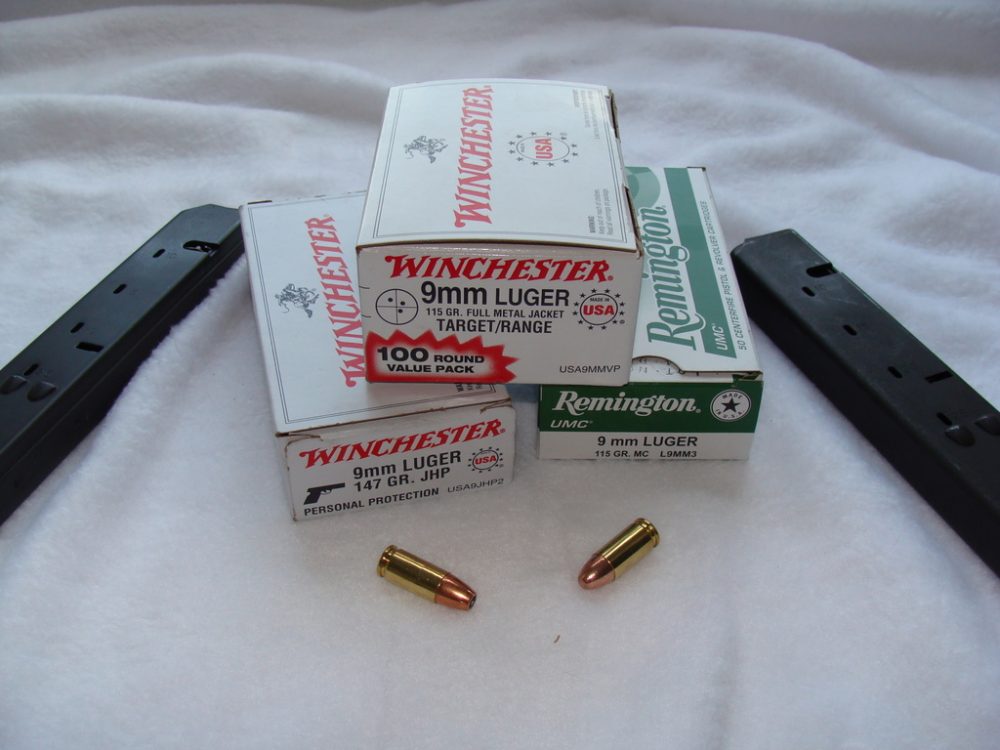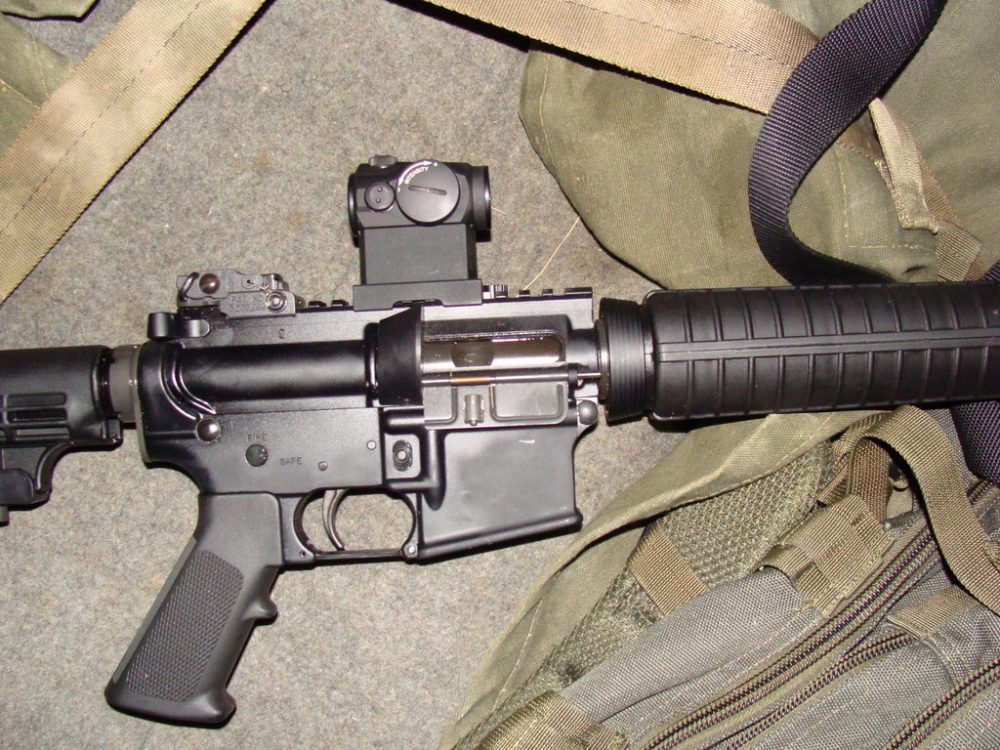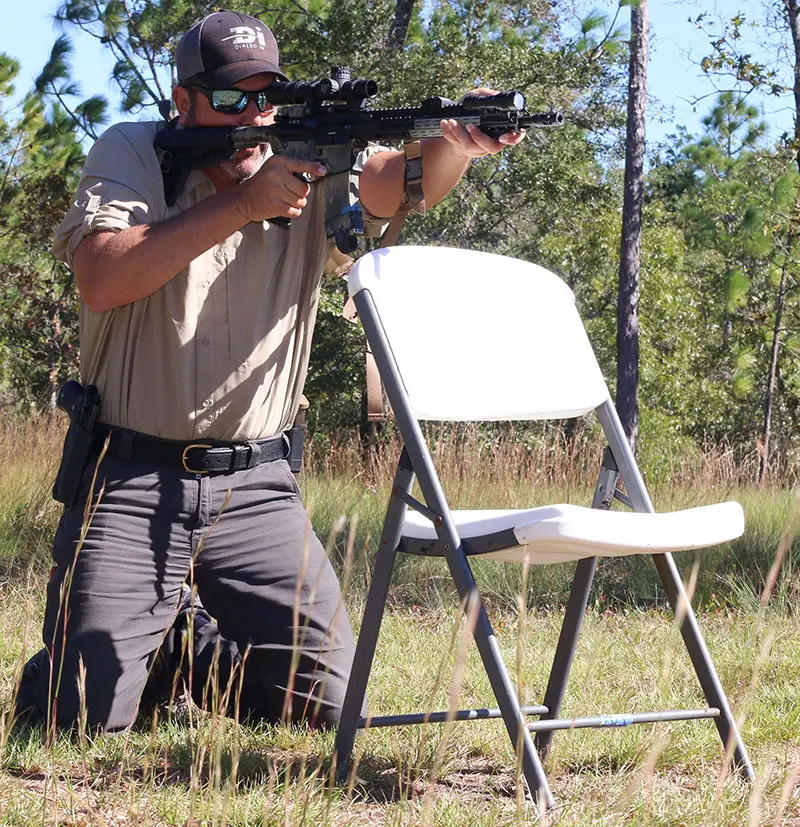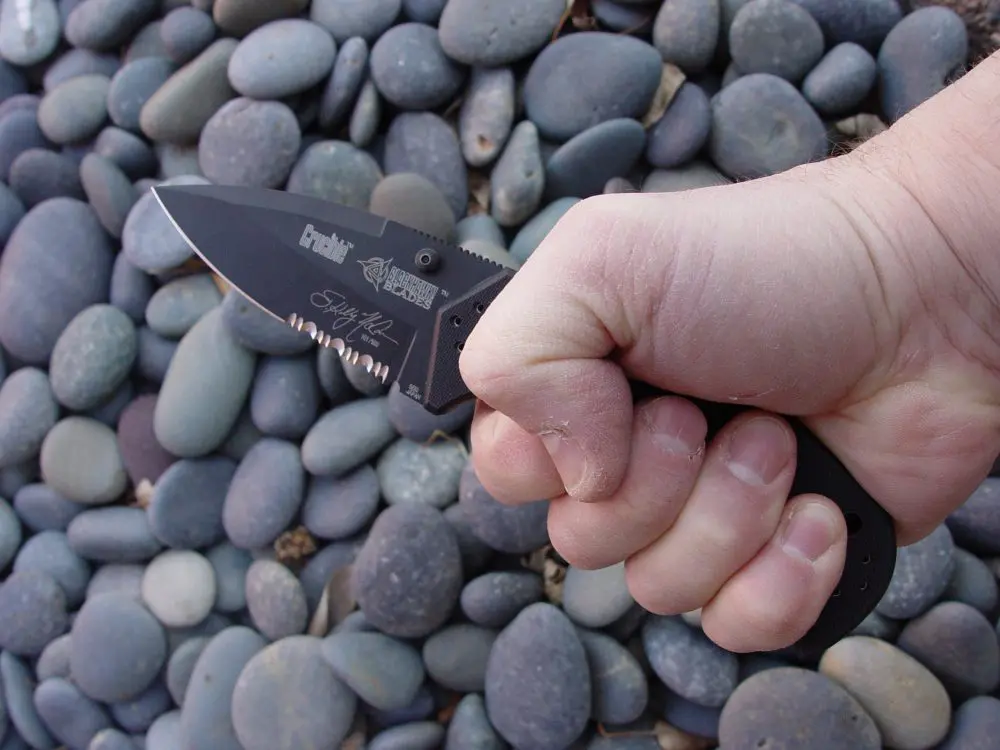Carbines chambered for the 9mm Luger cartridge have enjoyed enormous popularity for a long time. They’re found everywhere, from casual shooters and competitors to law enforcement and anti-terrorist agencies. While the HK MP5 is usually considered King of the 9mm carbines, it is expensive and out of reach for most private citizens. Now, with soaring ammo prices adding yet another reason to own a carbine chambered in the relatively inexpensive 9mm round, many are looking to their favorite AR manufacturers for help.
9mm AR by Rock River.
The 9mm AR concept is not new. The typical iteration involves a block fitted to the magazine well to of a standard AR lower receiver that allows it to accept the smaller 9mm magazines. While there are other types of 9mm AR designs, this is the only one we’re going to look at in this article. They are referred to as “Colt-pattern” 9mm AR carbines, as Colt is credited with being the first company to mass-produce this particular design. If you ask for a “Colt pattern” 9mm upper, and your vendor looks at you strangely, just tell him you’re talking about the 9mm pattern that uses regular AR lowers with mag well blocks.
If you’re not exactly new to building ARs, and perhaps have a few uppers that you like to swap around with your lowers, you’re probably wondering if you can just slap a 9mm upper on a standard AR lower and go. The answer to that is: kinda, sorta. While the aforementioned mag well block installs in a standard AR lower, you also need a 9mm hammer and action buffer to complete the transformation. It is not too difficult to change out these items, but it’s probably enough work to convince most people they need a dedicated lower.
Model 1 upper, Rock River lower, with modified UZI mags.
Extra mag block and action buffer shown for clarity. Note slightly
different hammer from that of 5.56mm AR.
Simply build up your AR lower exactly as you would a 5.56mm AR, being sure to use the proper hammer and action buffer for the 9mm carbine. These parts will be available from anyone selling the 9mm uppers. If you have never built an AR lower before, you can buy one complete and replace the hammer and buffer, or simply use your computer to find the instructions on the Internet. The best set of directions I know of are at www.ar15.com in the do-it-yourself forum. It’s worth repeating: be sure to use a buffer and hammer specifically for 9mm carbines.
The mag well block installs by inserting it just as you would a magazine. Once it locks into place, you secure it by tightening a hex screw that extends two detents that engage the inside walls of the mag well. The block also includes the ejector (the extractor is built into the bolt head that comes with your complete 9mm upper).
Modified UZI mags and ammo used for testing.
A number of manufacturers sell compatible magazines, the most expensive of which are made by Colt—they’re also the only magazines that activate the bolt catch. The magazines used throughout this evaluation are actually modified UZI mags, since they’re plentiful and reliable, even if they don’t activate the bolt catch. If there is any question as to the compatibility of a 9mm magazine, just be sure to ask for Colt-pattern mags. Glock magazines will not work with this design.
Mark Davidson of Ranger Sales (www.rangersales.com) sent me a Model 1 upper in 9mm, along with the mag well block, 9mm action buffer and 9mm hammer. I mated these to a complete Rock River lower with no problems at all. As a comparison, I took the Model 1 9mm AR to the range with a complete Rock River 9mm AR. I didn’t really expect to see any difference in performance, but in this case, I’m glad I went the extra step.
Close-up of EOTech on 9mm AR. Large shell deflector
interfered with some optics, but not this one.
Right away I noticed that neither rifle particularly liked 115-gr. Remington UMC ammunition. Groups were all over the place, and occasionally I witnessed some sparks coming from the muzzle. I’ve shot plenty of this ammunition before in pistols with no ill effect, but perhaps the longer carbine barrels caused the jackets to delaminate. Both carbines fared better with Winchester White Box, but here I discovered another interesting difference between the two 9mm ARs.
The Model 1 AR preferred the 115-gr. FMJ WWB, recording two-inch groups at 50 yards. When running the 147-gr. JHP WWB, the groups from the Model 1 AR opened up to about three and a half inches. Shooting the Rock River AR yielded the same results, only in reverse—it liked the heavier bullets better. Two to three inches is acceptable at that range for a pistol caliber carbine, but I thought the mirrored results to be odd, so I went home and did a little investigating.
Aimpoint T-1 mounted with no problem thanks to relief cut in LaRue mount.
The reason for the difference lies in the twist rates each manufacturer uses in their 9mm barrels. The Model 1 uses a 1:15 twist that clearly favors the lighter bullets, while Rock River uses a 1:10 twist that favors the heavier self-defense bullet. Much has been written on the relationship between bullet weight and barrel twist on 5.56mm ARs, but this was my first look at the same relationship in 9mm ARs.
Before you select a vendor for your 9mm complete upper, ask yourself what kind of barrel twist is important to you. If you plan on using this carbine as a home defense weapon, you may want a tighter twist for those heavier self-defense rounds. If you plan on just punching paper or using it in competitions, perhaps you’ll want a twist that prefers the lighter FMJ round. As far as which vendors are of good quality, I can only say that the Model 1 and Rock River carbines I evaluated were both worth a good look. There may be some manufacturers that have a twist in between the two tested here—say, a 1:12—but they are not known to me at the time of this writing.
Albaceli instructing a newcomer to the AR. While learning (tuck your elbows in, get square to the target!), might as well save money and the “good” ammo until shooter is more experienced.
Colt pattern 9mm ARs have shell deflectors that are very different from their 5.56mm cousins. They are mounted farther forward on the carbine, and are much larger in size. This created some difficulties in mounting optics to the flattop because the shell deflector interfered with some mounts. My EOTech mounted just fine, but my Aimpoint CompM4S could not have been mounted directly above the shell deflector without some Dremel work. Mounting an Aimpoint T-1 directly over the shell deflector would not have worked either, but the LaRue high-rise mount that the T-1 sits upon conveniently has a relief notch, allowing it to clear the shell deflector.
While ammo of all types continues to rise in price, it is pretty safe to say that 9mm Parabellum will always be cheaper than 5.56/.223. Get yourself a 9mm carbine for training, competition, home defense or just for fun. In any case, you’ll be saving money and saving the “good stuff” for when you really need it.












